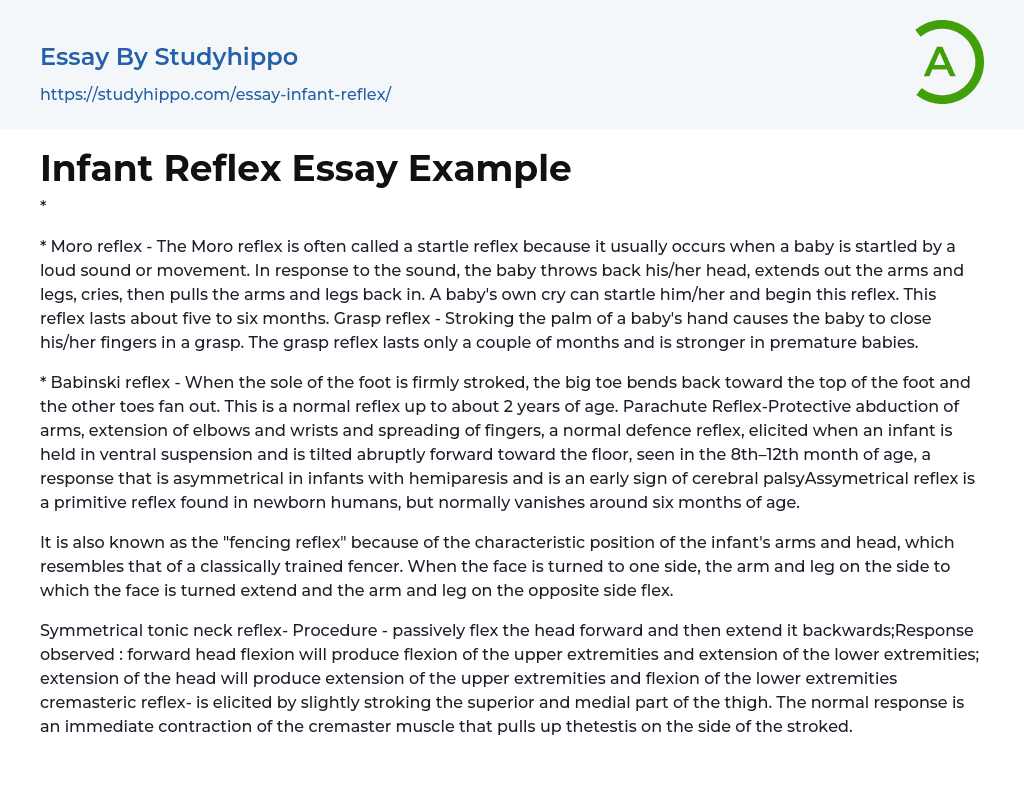The Moro reflex, also known as the startle reflex, typically happens when a baby is surprised by an abrupt loud noise or movement.
The baby exhibits a reflex response to sound, which involves throwing back its head, extending its arms and legs, crying, and retracting them. Interestingly, the baby can startle itself with its own cry and activate this reflex. Usually, this reflex lasts for approximately five to six months. Moreover, when the palm of a baby's hand is stroked, it causes the baby to clench its fingers into a grasp.
The grasp reflex is more pronounced and shorter-lived in premature infants. The Babinski reflex occurs when the foot's sole is stroked, resulting in the big toe bending backward and the other toes fanning out. This reflex remains normal until approximately 2 years old. The Parachute Reflex serves
...as a defensive reflex where an infant's arms spread out, with extended elbows and wrists, and fingers splayed apart when held in ventral suspension and tilted forward towards the floor. Typically observed between 8 to 12 months of age, this reflex becomes asymmetrical in infants with hemiparesis, indicating early signs of cerebral palsy. The asymmetrical reflex, also known as the "fencing reflex," manifests in newborns but usually vanishes by six months old. Its name stems from the characteristic arm and head position resembling that of a fencer.
The symmetrical tonic neck reflex can be tested by passively flexing the head forward and extending it backwards. This reflex causes extension of the arm and leg on the same side as the face is turned, while flexion occurs in the opposite arm and leg. When the head is flexed forward, there i
flexion of the upper extremities and extension of the lower extremities. Conversely, when the head is extended, there is extension of the upper extremities and flexion of the lower extremities.
To test for a response in the cremasteric reflex, gently stroke the superior and medial part of the thigh.
In a normal reaction,
The cremaster muscle will immediately contract,
resulting in upward movement of;the testis on;;the stroked side.
- Central Nervous System essays
- Adolescence essays
- Childhood essays
- Growth Mindset essays
- Individual essays
- Infant essays
- Is Google Making Us Stupid essays
- Action Potential essays
- Blood essays
- Body essays
- Brain essays
- Childbirth essays
- Eye essays
- Glucose essays
- Heart essays
- Human Physiology essays
- Immune System essays
- Kidney essays
- Muscle essays
- Nervous System essays
- Neuron essays
- Poison essays
- Puberty essays
- Sense essays
- Skeleton essays
- Skin essays




